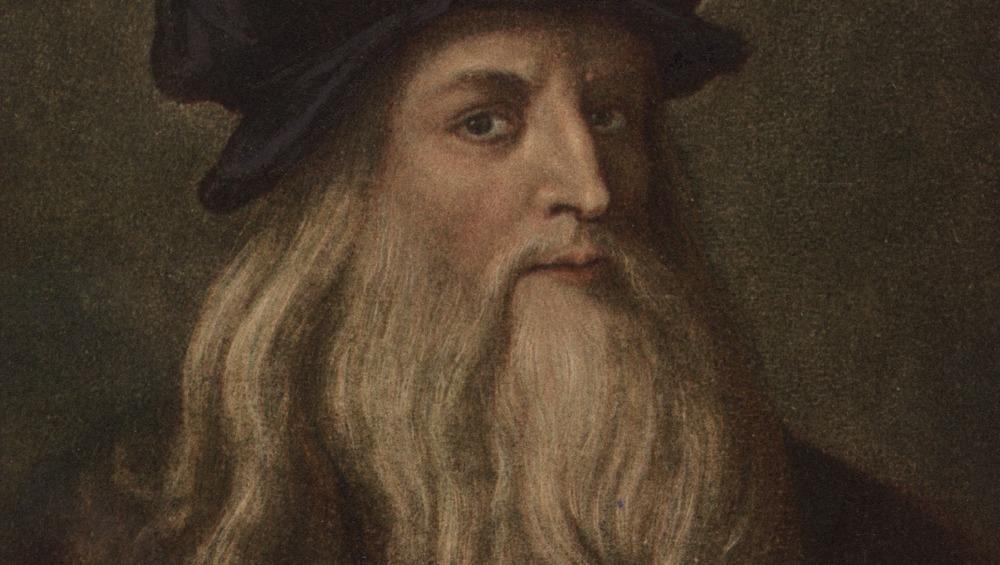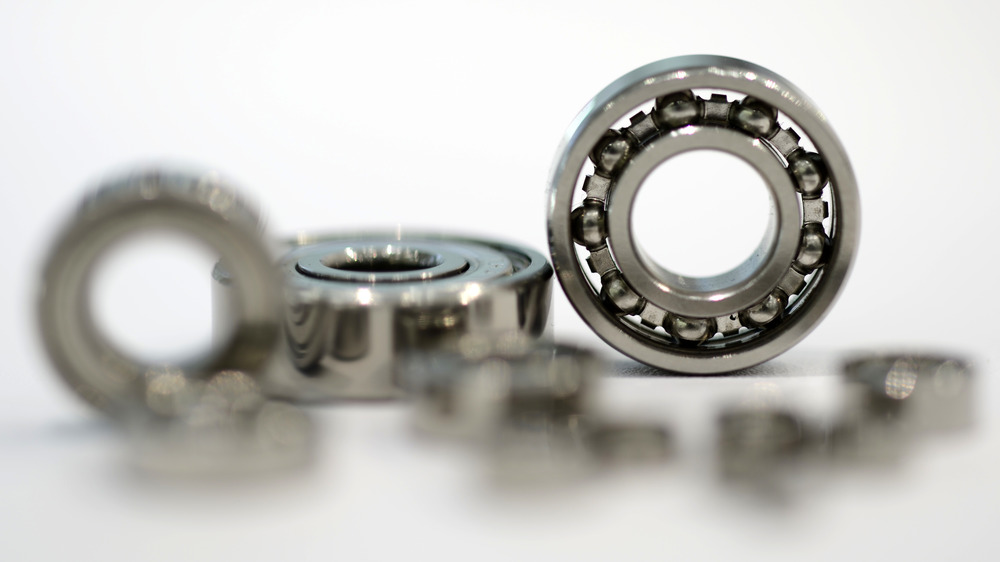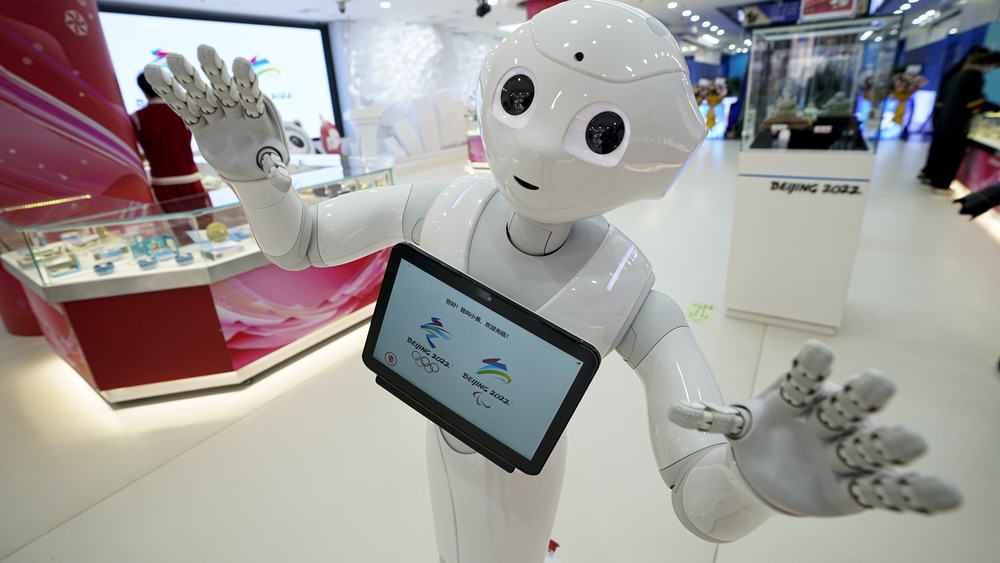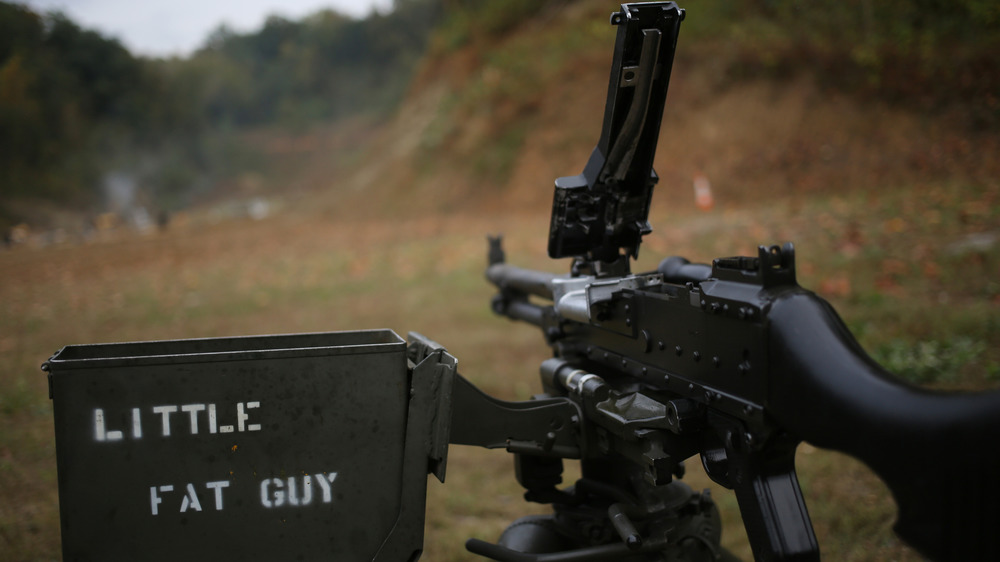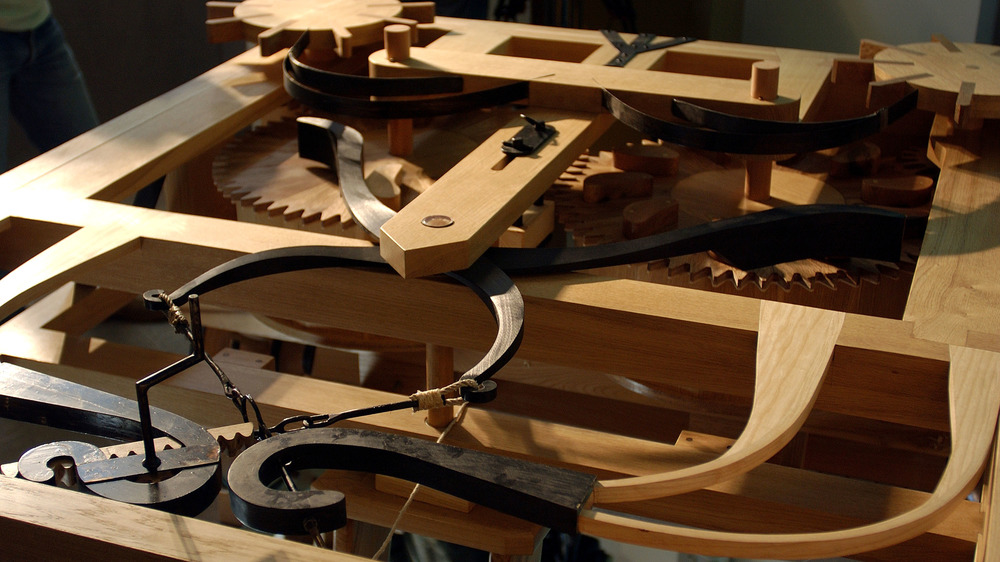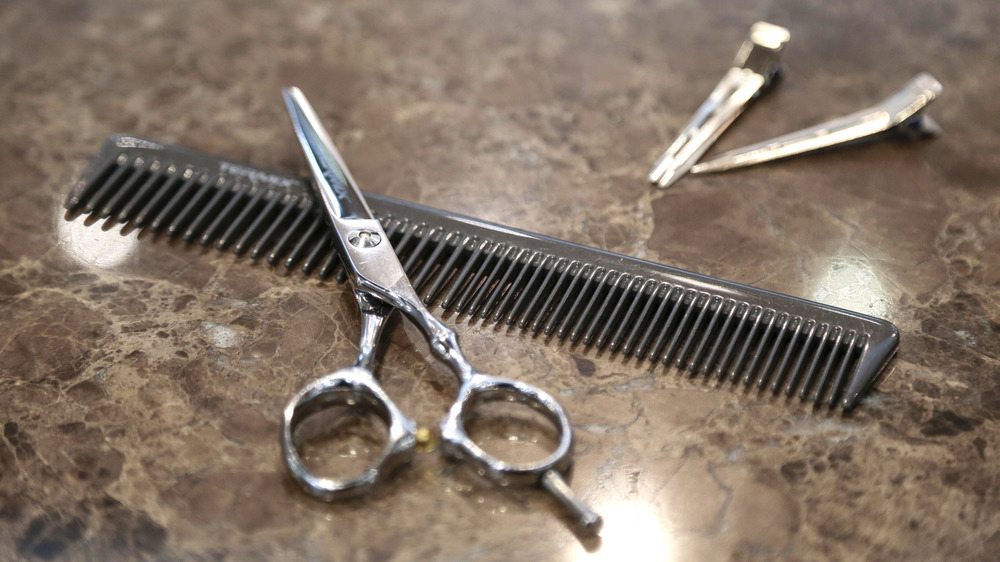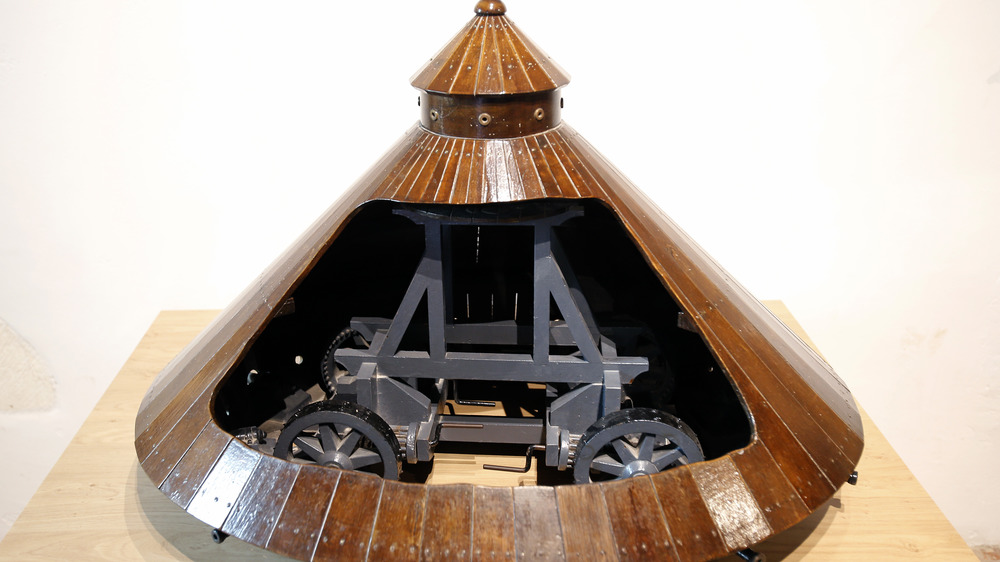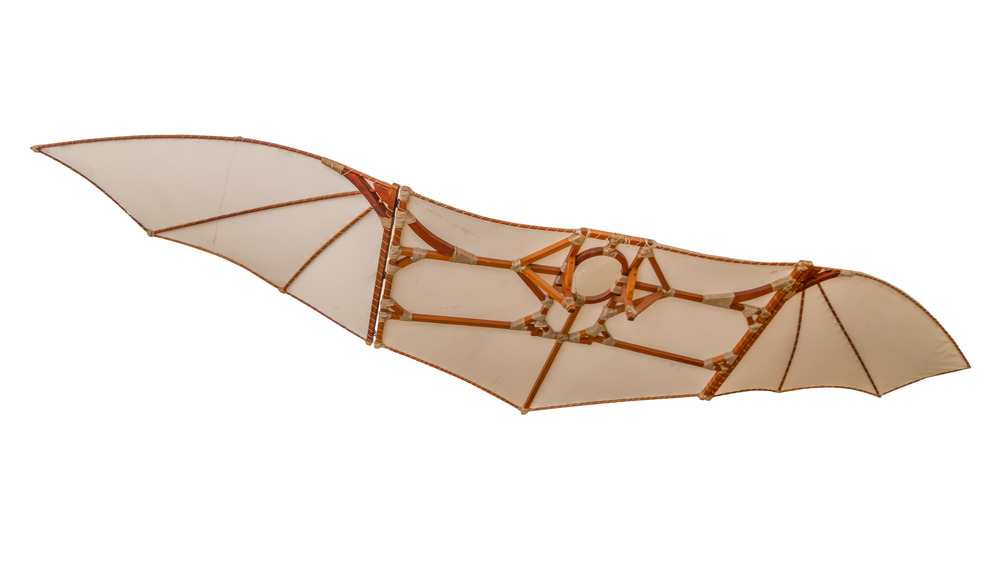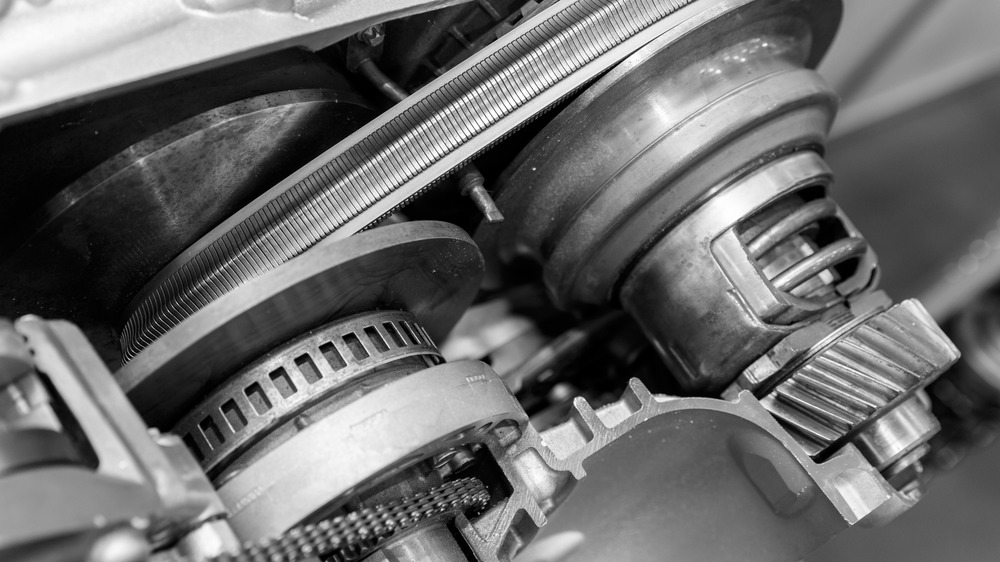Things You Didn't Realize Leonardo Da Vinci Invented That We Still Use Today
The Italian Renaissance was embodied most perfectly in a single vessel — the mind of Leonardo da Vinci. His curiosity, talents, and intellect reflect the many advancements of the era, and his rise in stature, from the bastard son of a notary to painting and engineering for many of Italy's rulers, echoes the never-before-seen opportunities presented by the Renaissance period's social progression. These, among a number of other notable reasons, are why da Vinci is widely considered to be "the ultimate Renaissance man."
Both today and in his own time, da Vinci was known first and foremost as an artist. He wasn't exactly a fan of this fact, but it's the truth. The painter fancied himself an engineer above all else, and he felt the sting of his classification each time he showed up on a ruler's doorstep with plans for his next great military invention only to be hired to paint what would become one of the world's most cherished portraits or frescos. This is the way life typically went for the polymath, even though his engineering mind was centuries ahead of his time.
Through the course of his life, da Vinci would invent and innovate a number of wondrous things, from flying machines to weapons and robots, only to have many of his works independently re-invented later on. Regardless, the maestro still invented them first, so let's give da Vinci the credit he's due. Here's a list of things da Vinci invented that we still use in the modern era.
The ball bearings in your wheels
Leonardo da Vinci doesn't hold the patent for the modern ball bearing, but that's more the fault of the flow of history than it is da Vinci's intellect or ambition. Patent law didn't exist in the late 1400s and early 1500s when the dude was still kicking. Back then, it was every inventor for themselves. The recognized inventor of the modern ball bearing is Philip Vaughan, who patented his bearings in 1794, according to Hartford Technologies, but da Vinci had sketched a similar design ball in his notebooks 300 years before Vaughan ever made his first steel drops. So, who really invented them?
According to Igus, a website that deals with all things bearing technology, da Vinci first invented the modern bearing around the turn of the 16th century. His sketch shows spherical bearings seated in a wooden plate to reduce rotating friction on one of his other inventions and, to be honest, there's a good chance it didn't even occur to him that this was a leap in technology. It was simply a component of a larger, cooler device (the aerial screw). You can see da Vinci's bearing sketch at Leonardo da Vinci's Inventions.
The bearing, among many other of this polymath's inventions, was independently invented several times throughout the human timeline. As Scientific American points out, even ancient societies created rolling devices to reduce friction and make movement easier. For example, the ancient Egyptians used wooden rollers to move large blocks of stone.
Inventing robots in the 15th century
Looking around at the world today, you can see that the robotics industry has some challenges. Sure, there are robots, and advances are made daily, but engineers haven't mastered the art in the way our favorite sci-fi novels have. Even so, our Rumbas and automated factory arms would be an ungraspable sci-fi mirage to those from 100 years ago. Here's the thing though — robots aren't a new invention. Modern technology certainly makes the robots of today more advanced than those of centuries past, but they have been around for quite some time. Very few of us with our contemporary college educations would be capable of building the robotic engineering marvels invented by Leonardo da Vinci.
There's a bit of an argument, according to Iowa State University, over whether it was da Vinci who first invented robots or if it was his Arabian counterpart, Al-Jazari. But da Vinci independently invented a few "first" robots that seemed to be displaced in time. As History mentions, da Vinci designed a fantastical robotic knight that could move on its own. Using a system of gears and pulleys, this android could stand and sit, lift his visor, and even cross his arms. The great maestro also invented the world's first programmable, robotic cart, according to ARTpublika Magazine. Think of it as a wooden prototype of Google's self-driving car without all the brains.
Leonardo da Vinci invented the parachute... or did he?
Leonardo da Vinci's parachute has become a sort of legend among history and skydiving buffs alike. With a simple Google search, you'll probably read all sorts of cool things about how da Vinci invented the cloth device that allows our modern daredevils to give acrophobics everywhere premature heart attacks, but that's not really how things went down. In the past, as pointed out by John H. Lienhard, a professor at the University of Houston, it was generally believed at one time that da Vinci may have independently invented this device, but even that notion has fallen suspect.
According to PBS, Mariano di Jacopo, another inventor from da Vinci's era, invented a strikingly similar parachute that da Vinci may have copied. He probably didn't steal di Jacopo's design outright, but based on the drawings, it's possible he sketched his own design after hearing about di Jacopo's invention since both parachutes have different enough schematics. Di Jacopo's parachute, for example, was cone-shaped whereas da Vinci's was a pyramid. In other words, the construction is similar.
Da Vinci's parachute, as detailed by the British Library, was comprised of a wooden frame covered in sealed cloth and was meant to allow the user to jump from great heights without that pesky death thing cropping up. And though this device was likely never tested in da Vinci's time, a daredevil by the name of Adrian Nicholas proved its viability when he jumped from a hot air balloon with a replica of da Vinci's parachute in 2000, according to Britannica.
Leonardo da Vinci invented the early machine gun
The great maestro was as much of a military engineer as he was anything else, which seems a bit out of character for a man thought to have been a pacifist. His ingenuity grabbed ahold of most everything in front of him, solving problems others wouldn't have the capacity to consider and innovating the world in ways few others would dream about. Military weapons, such as primitive machine guns, weren't exempt from Leonardo da Vinci's innovative drive.
Da Vinci's approach to improving firearms, mostly cannons at the time, took two routes. This first was adding multiple barrels. Machine Gun: The Story of the Men and the Weapon That Changed the Face of War, by Anthony Smith, points out that he created a fan-shaped weapon for Louis XII that consisted of multiple barrels spraying an unholy mass of projectiles across some unlucky battlefield. A relic believed to be another of da Vinci's machine gun designs, this one a tame tri-barreled contraption, according to The Telegraph, was found near a 15th-century Croatian fortress in 1968 and is believed to have been used to fend off Ottoman invaders. The final design of note and da Vinci's second mode of firearm innovation, sketches of which can be viewed at Italian Renaissance Art.com, is a revolving machine gun with three platforms of multiple barrels, allowing one to be reloaded while another fires.
While da Vinci's "machine guns" may not look or function like any firearms used today, they were a huge stepping stone in rapid-fire technology.
Leonardo da Vinci invented spring propulsion
Going back to Leonardo da Vinci's wondrous self-driving cart, he designed another one or two inventions that are welcome in the modern world. Of course, these are other independently invented devices that were lost to history, allowing them to spring up under other inventors' names centuries later. Let's talk about springs.
Da Vinci didn't invent all springs. Basic springs, as Coiling Technologies Inc points out, have been around since humans learned to build. Bowstrings are technically springs since they absorb and release tension to fire arrows. Springs have been used in ancient chariots, among other things. They're not new now, and they weren't new during the Renaissance. What da Vinci did by taking those springs and using them to create a drive system that propelled his self-driving cart, on the other hand, was new, and it took us a long time to figure out.
According to How Stuff Works, the 20th century saw several attempts at recreating da Vinci's cart fall flat. Engineers just couldn't make the thing move. Then, in 2004, at the Institute and Museum of the History of Science in Florence, something clicked. Hidden inside the drum casings were two coiled springs that held mechanical tension and released it slowly to propel the cart forward. Ta-da! — Spring drive. Spring drive is still around today, but it's not used for anything grand. You'll mostly find in the children's toy cars that you draw back to wind up and release to send forward.
Leonardo da Vinci's system for cadaver preservation
The spirit of Renaissance progression flowed through Leonardo da Vinci in every way. He made art that has yet to be matched, he invented terrible machines of war, and, something you likely don't know about the man, he made serious advancements in the world of medical science. According to MedicineNet, da Vinci developed a technique while dissecting cadavers in the late 1400s for preserving the open structure of blood vessels and cerebral ventricles by filling them with wax. The publication also states that this technique is still used today. Dana Foundation says the wax served as a mold that allowed da Vinci to view and accurately sketch the inside of the ventricles, which brings us to the maestro's next achievement.
The polymath did more than dissect bodies. He drew them with an empirical precision never before seen. It's why he's credited as the father of modern anatomical illustration, the one who laid the basis for the entire field of work that provides medical students with overpriced textbooks. His anatomical notebooks housed as many musings about the human body as they did his drawings of it. This is where things really get interesting. It turns out, according to the American College of Cardiology, that da Vinci decrypted the heart's circulatory function and discovered coronary artery disease, centuries before anyone else. And, he did so by artfully carving up a few dozen bodies long before refrigeration was a thing, a sacrifice for knowledge if there ever was one.
He didn't invent scissors, but people sure think he did
Somewhere between Leonardo da Vinci's birth and today, somebody made the claim that da Vinci invented the double-bladed sheering device that people couldn't imagine living without. That claim then reached another person who spread it to another until, eventually, it made its way to the internet. Now, a fraction of the world is under the impression that The Renaissance Man is the person responsible for bringing humanity from the dim, dark ages of cutting things with a single blade knife to the brighter times of the modern scissor. Had da Vinci done so, it would've been a world-shaping accomplishment, but that's not how things shook out.
As Thought Co. points out, sheers and scissors have been around since at least the first century C.E. The publication also claims that scissors were seen as early as 1500 B.C.E. in ancient Egyptian society, but textile archaeologist Gillian Vogelsang-Eastwood (found via OpenMind) says there's no evidence to back this up, and it's just another scissors-related hearsay. So, where did the da Vinci rumor come from then? It's probably a mix of da Vinci using scissors to cut canvas, which he and many others did, and a 500-year-old game of Telephone.
The Renaissance battle tank
The idea of Renaissance warfare brings a lot of things come to mind — swords, castles, cannons, flintlock pistols, and the like — but it's hard to envision a giant tank driving through the calamity of an Italian battlefield causing mass destruction with waves of cannonballs. To our knowledge, this hypothetical scene never actually played out, but thanks to Leonardo da Vinci, it could have.
Mixed in with da Vinci's sketches of a scythed chariot and his machine guns are the sketches for a tank large enough to fit eight men. The men powered the tank's movements with two cranks that operated a series of gears, according to Leonardo da Vinci: Renaissance Artist and Inventor, by Stephanie Kuligowski. The outer shell of the tank, which Cove says was inspired by the natural shell of a turtle, consisted of heavy slanted wooden planks covered in metal to deflect incoming fire. The armored war vehicle was further decked out with cannons at every angle of its circumference to ensure its deadly shots could reach all opposing soldiers on the battlefield. It would've been a true death machine had it actually been designed to work.
According to How Stuff Works, da Vinci sketched the design to be inoperable. Nobody knows if he did this on accident or if it was an engineering flaw, but the cranks that propelled the vehicle are drawn so the wheels would spin in opposing directions, preventing the deadly man-made turtle from doing anything but donuts.
Early endeavors into flight technology
Outside of war machines, Leonardo da Vinci had other obsessions. His fascination with flight was known to consume his thoughts. It's clear from the more than 500 sketches and 35,000 words worth of notes on flying machines, as mentioned by the Smithsonian, that the polymath wanted to take humans from their terrestrial comfort zone and enable them to soar through the air like a bird, bat, or gravity-defying super screw. Had he only been around a few centuries later, he'd have seen his dreams come to fruition, but — alas — da Vinci was born to the wrong era.
In his notebooks, da Vinci sketched several different flying machines. Some of which may have worked if lighter materials and combustion engines had been available in the Renaissance. The maestro designed a helicopter of sorts built of reeds and sealed cloth that resembled a screw, called, according to The Conversation, the "aerial screw." Go figure. The design was based on a device created by Archimedes to move water. Da Vinci adapted it to move air. The aerial screw was powered by human muscles and levers that would've made for an extremely dangerous flight if the pilots got too tired to keep up, but that's probably what his parachute was for, right?
Da Vinci also designed a few different ornithopters, flying machines with flapping wings similar to birds. His designs may not have worked, but they did inspire a wave of working ornithopters that can be occasionally spotted in the sky.
Leonardo da Vinci added a second hull to the ship
Some of the things Leonardo da Vinci invented were too "before their time" to be of use to the Renaissance citizen, while others were surpassed in ingenuity before this age came to pass. But there are a few of his inventions that are still around and kicking. Arguably the second most useful of them (the first is up next) is the concept for a double-hulled ship. Maritime vessels during da Vinci's life ran with just a single, puny hull (the bottom part of the boat that goes in the water). It's not actually that weird. Most vessels today are monohulled as well, but da Vinci's double hull has its place. According to UTS, da Vinci proposed giving naval ships a second hull to protect their structural integrity if they were to be rammed by an enemy vessel or hit an underwater rock or whatever. It's not really an "invention" per se, but this concept has proved pretty useful, and it's worth noting.
Today, da Vinci's idea protects the waters at every turn. How can that be true if most ships are monohulled? Because the ones that do have two hulls carry some nasty crud. According to the National Oceanic and Atmospheric Administration, oil tankers are required to have double hulls to prevent accidental spillage in the case of a maritime accident. Unfortunately, though, the double hull has only been a requirement since the Oil Pollution Act of 1990 was passed.
Leonardo da Vinci invented a continuous variable transmission
While the second-most useful of Leonardo da Vinci's inventions still around today is the double-hulled ship, his first could arguably be the continuous variable transmission (CVT). Nearly everyone on the planet uses or benefits from the use of a CVT on a daily basis. They're everywhere. Da Vinci first invented this device more than 500 years ago when, according to UTS, the maestro slapped three gears of differing sizes onto one shaft that spun against a single cone-shaped lantern gear. What this array did was allow the transmission to spin at three different speeds simultaneously and provide a range of available torque. This design is why a car can both accelerate and go fast, why it has the power to climb hills, and the speed to make this mode of travel worth our while. A single gear would only allow for one or the other.
Da Vinci's device was improved upon and patented in 1886, according to How Stuff Works, and has since been used in everything from motor vehicle drivetrains to geared bicycles and heavy machinery, like the milling saws the original patent was used for. The lumber that builds our houses, the transportation that takes us to work, the machinery that runs our world, it's all due to a simple arrangement of cogs and gears that the great Renaissance man designed centuries ago. Da Vinci's mind was truly a gift to the world.
